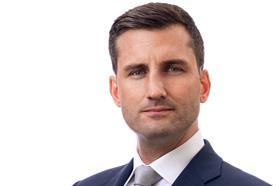At least 15% of the UK population has a disability. However, a recent open letter issued by the GCs of major corporations in the US and UK observed that only 0.38% of all lawyers in law firms are disabled.

On 30 October, we took an important step towards improving this picture with the launch of the International Chamber of Commerce’s (ICC) Guide to Disability Inclusion in International Arbitration and ADR.
The guide is the culmination of two years of work by the ICC Task Force on Disability Inclusion, which was launched in December 2020 at the behest of Claudia Salomon, the incoming president of the ICC Court of Arbitration.
It was a bold move. Disability is still underrepresented in the City of London, in the law and in the sphere of international dispute resolution. To take one example, all major arbitral institutions collect and publish information regarding the gender and nationality/geographical diversity of their arbitral appointees. We expect that – and so we should. But none collect comparable data for those with disabilities. Setting aside the message this sends about how we view disability, without the raw data we cannot know the scale of the problem, nor measure any improvement.
Moreover, there remains a powerful stigma about disability, with many of those with invisible disabilities preferring to suffer silently for fear of the consequences of openness. Research by Scope shows that a third of people see the disabled as being less productive than the non-disabled, suggesting, sadly, that such apprehension may be justified. Now consider that preconception in the context of our profession, where expectations are high, deadlines are tight, and the billable hour is still highly prized.
I have grappled with these concerns personally. In December 2019, my partner and I were preparing for our first Christmas with our son, Leo, who had been born the previous March. The festivities were brought to an abrupt halt when I was diagnosed with bowel cancer. Four days into the New Year, I was admitted to hospital for an operation to remove the entirety of my colon and rectum, leaving me with a permanent stoma – a section of the small intestine poking out from the abdomen, over which I wear an ostomy bag.
In this context, the work of the ICC task force on Disability Inclusion has two important consequences.
First, in its guide, the task force has set out concrete proposals to enhance the accessibility of the arbitral process for practitioners and users alike, in particular through the incorporation of standardised mechanisms to enable requests for reasonable adjustments to accommodate counsel, witnesses or arbitrators with disabilities.
This might be needed, for example, where a witness is visually impaired or unable to sit for long periods of time. For my own part, as a result of my ostomy bag, for comfort and accessibility I now avoid wearing traditional business attire where possible, including when I appear as an advocate. A discrete method of communicating to a court or tribunal that alternative clothing is not a sign of disrespect, but rather a practical solution to an unseen disability, will be a valuable tool.
Second, simply through its existence, the task force has begun to put disability on a level playing field with other protected characteristics. That is vital. We should aim for a profession where nobody thinks twice about being transparent about their disability (if they want to be), and no one feels that twinge of doubt as to whether their disability will take away not just their sense of self but also their ability to achieve their personal and professional goals.
But we need to go further. Now it is time to recognise that disability inclusion in the law is not just a moral right but a strategic imperative for the future of the profession.
With regards to those already practicing law, we need to recognise – as we explore in the ICC guide – that many disabilities can be accommodated by the provisions of straightforward and often inexpensive adjustments to working conditions and environments. And it should not be complicated or awkward to make such requests. Rather, the process should be simple, visible and transparent, and subject to oversight by an appropriately trained member of staff, so that further adjustments and follow-up can be easily addressed.
At least as important are those aspire to join our profession. The stigma attaching to disability combined with the low number of disabled lawyers creates a situation where there is a paucity of disabled lawyers to act as role models for younger disabled professionals. We should look to give profile to such role models as are available, not only to normalise disabilities but to show that the paths to success are not insurmountable. In this way, the legal profession can open up for itself access to a huge pool of motivated, resilient talent and a wellspring of diverse and creative thought.
Simon Maynard is counsel at King & Spalding, co-chair of the ICC Task Force on Disability Inclusion, and a member of the Law Society's Disabled Solicitors Network committee































5 Readers' comments